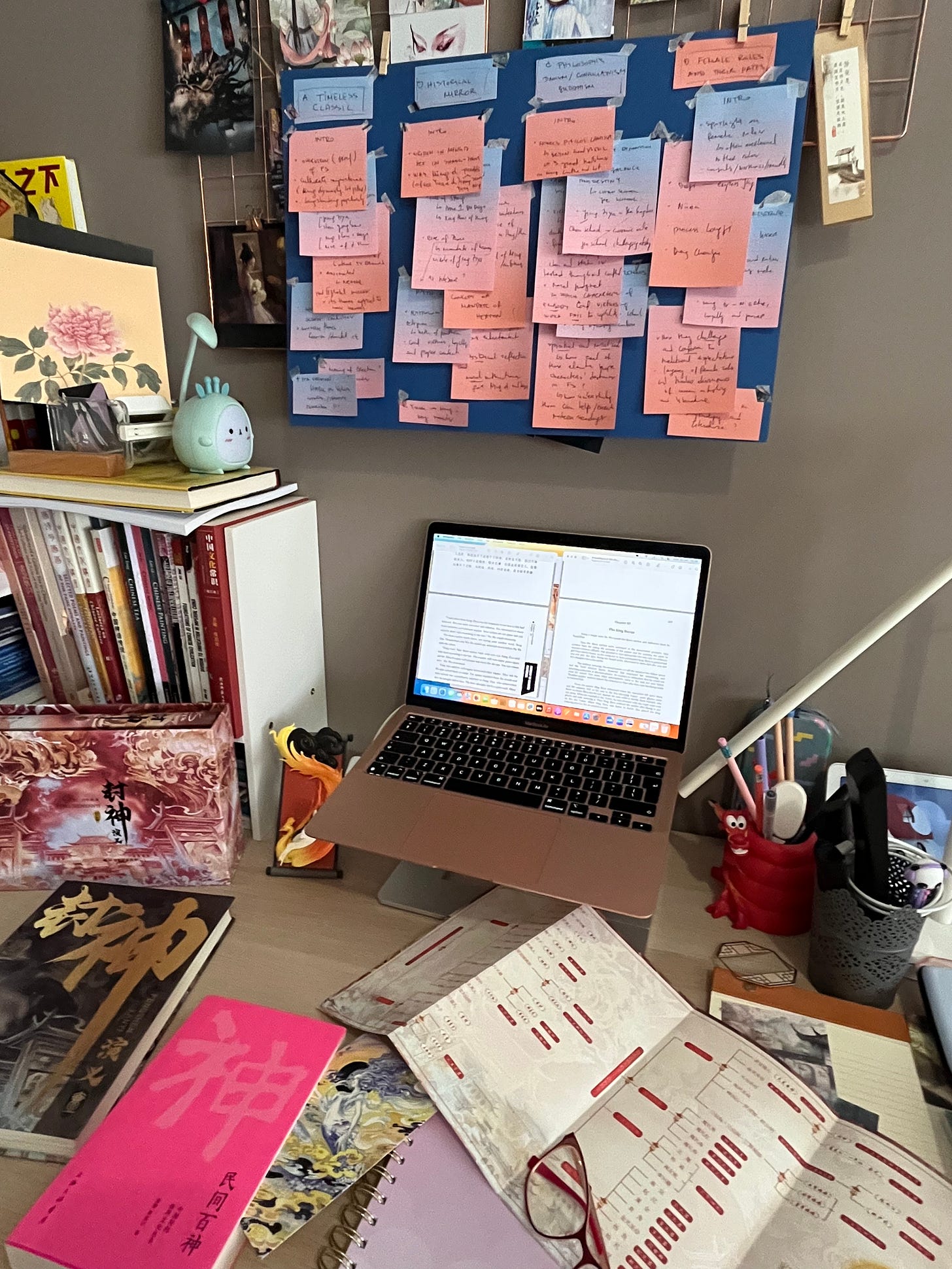Some articles arrive with a clear structure. I know what I want to say, where I want to begin, and how it will end. There’s a comfort in that kind of writing—it’s like walking a familiar path. In Jade Moon, articles like the travel features or myth retellings usually follow that rhythm. I choose a legend, map out its structure, reflect on its key themes and look at how it continues to influence culture today. Simple, focused, satisfying.
But other pieces are different.
They come with layers. Too many directions and too many entry points. Instead of asking “How do I write this?” the real question becomes “Which version of this article do I want to write?”
That’s what happened with the piece I’m currently working on—an article on Investiture of the Gods. This novel blends mythology, history and philosophy, with material that is rich, dense and well-known. And that’s part of the challenge: how do you bring something fresh to a story that has already been told so many times?
I started with multiple drafts—each with a completely different approach. At one point, I had a version that approached it as a literary classic—looking at its structure, style and lasting influence through modern adaptations. Another focused on historical legacy and political commentary. There was even a draft that tried to compare it to other major epics. All of them were valid, but none of them felt right.
That’s when I paused and returned to a method I often rely on when a topic feels too large: I made a board.
Not a digital one. A physical one—old-fashioned, with coloured Post-its and handwritten notes spread across a sheet of blue cardboard. I wrote down the major themes, the possible angles, the questions that wouldn’t go away. It helped me see the whole picture and gave me the space to reflect, not just on what I could say, but on what needed to be said.
Once I laid everything out, the problem became easier to name: it wasn’t that I didn’t have enough material—it was that I had too much. The more I read, the more paths opened up. And when everything feels interesting, it becomes harder to decide what actually matters to the piece you’re writing.
That’s where structure became essential. I started looking for recurring questions in my notes. What themes kept showing up, no matter which angle I explored? Which characters or events refused to be background noise? And what did I keep circling back to, even if I wasn’t fully aware of it at first?
Eventually, one thread began to stand out. It was subtle, not the obvious choice. But the more I sat with it, the more I realised it had weight. And it offered something that felt worth exploring.
I’m still shaping the article now, but I’ve learned something through this process: the most complex pieces don’t usually start with answers. They start with tension, with not knowing. With circling an idea from a distance until it finally opens up.
Sometimes that takes four drafts. Sometimes more.
Now that I’m in the middle of editing and pulling everything together for the magazine, I’m reminded that I’m still figuring a lot of this out. Writing something I’d love to read, and hoping it will mean something to someone else, isn’t a straightforward process. It’s often messy, uncertain and full of questions. But maybe that’s just how it works.


